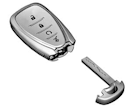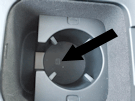How to Open a Vauxhall with a Dead Key Fob Open a Vauxhall or Opel First note that if you are already inside, click here for help getting started! Second, for video help, click here. Finally, if you need or want another manufacturer, click here. Retrieving the mechanical key If the key fob or electronic …
Tag: won’t open
Permanent link to this article: https://dashboardsymbols.com/2020/12/vauxhall-dead-key-fob-help-part-i-getting-in/
Open a Holden with a Dead Key Fob
How to Open a Holden with a Dead Key Fob Getting into Your Holden But first, if you are already inside, click here for help getting started! Second, you’ll find video help here! Finally, if you need or want another manufacturer, click here. Retrieving the mechanical key Holden uses three key fob or transmitter styles. …
Permanent link to this article: https://dashboardsymbols.com/2020/10/holden-dead-key-fob-help-part-i-getting-in/
Alfa Romeo Videos: Help for Key Not Working
How to Open, Start and Replace Fob Batteries in Alfa Romeo Vehicles We have two videos thus far for Alfa Romeo owners The video will help Alfa Romeo owners get in and start keyless start their Giulia, Stelvio and Tonale models . ——————————————————————- Alfa Romeo key fob battery replacement. ——————————————————————- The information on this …
Permanent link to this article: https://dashboardsymbols.com/2020/04/alfa-romeo-video-help-with-dead-key-fob-batteries/
Open an Alfa Romeo with a Dead Key Fob
How to Open an Alfa Romeo with a Dead Key Fob First, if you are already inside, click here for help getting started! Second, you can find video help here! Finally, if you need another manufacturer, click here. Alfa Romeo introduced push button start in the new Giulia model in 2017, followed by the Stelvio …
Permanent link to this article: https://dashboardsymbols.com/2018/12/alfa-romeo-dead-key-fob-help-part-i-getting-in/
Start a Mercedes-Benz with a Dead Key Fob
How to Start a Mercedes-Benz with a Dead Key Fob Starting Your Mercedes-Benz But first, if you are still locked out, click here. Second, for video help, click here. Finally, if you need or want another manufacturer, click here. To start a Mercedes-Benz that uses the tapered SmartKey style, the engine Start / Stop ignition …
Permanent link to this article: https://dashboardsymbols.com/2018/11/mercedes-benz-dead-key-fob-help-part-ii-getting-started/
Start an Audi with a Dead Key Fob
How to Start an Audi with a Dead Key Fob Starting Your Audi But first, if you are still locked out, click here for help getting inside! Second for video help, click here! Finally, if you need another manufacturer, click here. Early Models Early Audi models use a slot in the dashboard but do not …
Permanent link to this article: https://dashboardsymbols.com/2018/11/volkswagen-and-audi-dead-key-fob-help-part-i-getting-started/
Start a Volvo with a Dead Key Fob
How to Start a Volvo with a Dead Key Fob Back-up start processes for Volvo models keeps changing seemingly each year, but we have you covered. But first, if you are still locked out, click here for help getting inside! Second, for video help, click here. Finally, if you need or want another manufacturer, click …
Permanent link to this article: https://dashboardsymbols.com/2018/11/volvo-dead-key-fob-help-part-i-getting-started/






